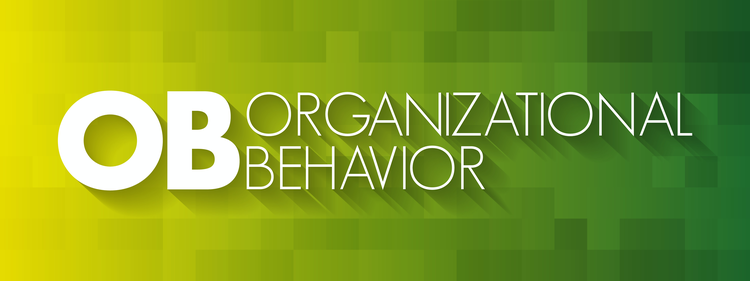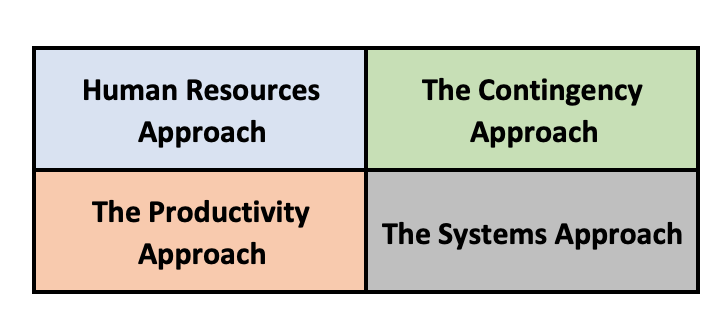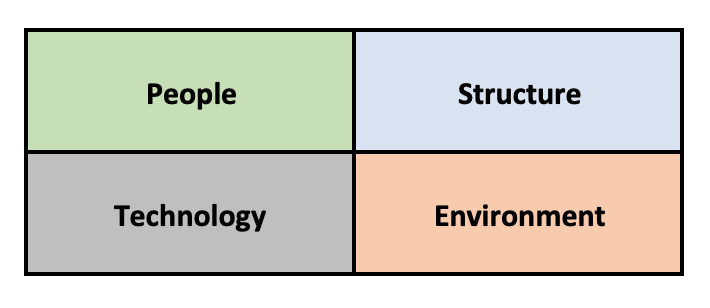
Organizational Behavior is the research and study of how people behave and interact with one another within an organizational setting (i.e., a business).
In understanding behaviors (and associated processes), we can obtain data that can help drive effectiveness and efficiencies within our business, shedding light on individual performance and the basis of interplays between individuals and teams.
In today’s article, we’ll be looking at some of the detail behind Organizational Behaviour, how you can use it, and what benefits you can derive.
We’ll be looking at:
- What is Organizational behavior
- What Is the Importance of Organizational Behavior?
- What Are the Four Approaches to Organizational Behavior?
- What are the Key Forces that affect Organizational Behavior
- What are the benefits of Organizational Behavior
- Criticisms of the organizational Behaviour approach
What Is Organizational Behavior?
As we described during our introduction, Organizational Behavior helps us assess
- How people behave,
- How people interact with one another
- How people/groups interface with an organization.
As a methodology, it focuses on understanding people’s behavior and what that means for an organization, for example, how does behavior affect:
- Organizational infrastructure,
- Leadership,
- Communication,
- Teamwork
- Etc
Organizational Behaviour is not a standalone discipline and has various contributors to it, including, Economics, Psychology, Anthropology, Political Science, etc.
What Is the Importance of Organizational Behavior?
The way people function inside an organization directly affects that organization’s success.
Organizational behavior, therefore, is of great importance for leadership as it provides valuable insight into several key areas, including:
- What motivates the organization/employees?
- Why people and teams perform the way they do?
- How employees behave and interact with one another to deliver results?
- Which are the optimum set of tools and processes that align with an organization’s behaviors?
In understanding the answers to these questions, organizations can empower themselves to adapt, improve, and thrive.
Organizational Behavior has eight key objectives:
- Increased Productivity
- Improved Job Satisfaction.
- Enhanced leadership development
- More effective recruitment
- Strong organizational culture
- Improved employee relations
- Greater understanding between employees to Leaders and leaders to employees
- More effective teams
What Are the Four Approaches to Organizational Behavior?

Organizational Behaviour has four key strands:
- The Human Resources Approach
- The Contingency Approach
- The Productivity Approach
- The Systems Approach
Let’s take a look at them in a little more detail:
1. The Human Resources Approach
A focus on:
- The growth and development of people
- The delivery of an improved work environment
The results of which deliver high levels of output.
2. The Contingency Approach
This approach asserts that different situations require different responses when it comes to behavioral practices.
It assumes the premise that a set of behaviors might excel in one situation but may fail in another.
An individual’s results differ because aspects of the situation differ.
The result is that leadership must analyze each individual situation, identify the variables, and determine what approach works best to achieve an objective.
3. The Productivity Approach
A given leader/manager has a given efficiency and effectiveness; this drives the output of his/her team.
The greater the output with the same resources, the higher the manager’s efficiency.
Choices around organizational behavior will often involve balancing issues, whether they be economic or human/social. As a result, productivity is often an integral element of the decision-making process.
4. The Systems Approach
The Systems Approach to organizational behavior takes a holistic view of the organization, viewing it as a single system made up of interrelated elements.
This approach gives managers a way of looking at the organization as a whole, i.e., the person, the whole group, and the whole social system.
This approach focuses on the fact that all the factors that make up an organization’s system need to be interdependent for the organization to be efficient. The systems approach investigates how the organization interacts with the broader environment in which it operates.
What are the Key Forces that affect Organizational Behavior?

1. People
People are what make up the social system within an organization. Since the system consists of all the individuals and groups in an organization, leaders need to steer them in the right direction.
2. Structure
The structure defines how people are used within an organization. Individuals all relate structurally in an organization, which is what allows them to be coordinated.
3. Technology
Technology provides people with the resources they need to do their work in a way that’s better and more efficient (or, conversely, be restricted).
4. Environment
All organizations have an internal and external environment. They’re part of a larger system with lots of elements that must be considered, with many of them likely to have a direct impact on the organization.
What are the benefits of Organizational Behavior?
There are many benefits of organizational behavior; these include:
- Improved understanding of behavior can help us relate it to the effectiveness of an organization
- It provides methods for managers to do drive efficiency and effectiveness within leadership roles
- It helps the development of work-related behaviors within an organization.
- It helps drive employee engagement with both personal AND organizational goals
- It helps managers build an environment that’s motivational.
- It facilitates the improvement of functional behavior in the organization.
- It encourages self-development and personal development.
Criticisms of the organizational behavior approach
Searching for why people behave in the way that they do is notoriously complex. As with all methodologies, there are some criticisms that have been levied at organizational behavior; these include:
- A narrow view of organizations and the people that operate within them
- Emphasis on behavior as a key catalyst behind output, which may have diminishing (or negative) returns.
- Centered around a western view and does not take into account behavioral differences areas such as developing countries
- Neglects the effect of the outside-work life of an individual and how it can impact on work life.
- The model has a broad generalized scope that fails to account for differences between people, organizations, and industries.
- Not data-driven and relies too heavily on anecdotes for validity.
- Manipulation of people/teams may be unethical.
Summary
The nature of work is continuously evolving. This has important ramifications for organizations looking to drive efficiency and effectiveness, and theories such as organizational behavior with its tangible benefits can add value to decision-making processes.
A model’s ability to help an organization understand the concept of
- An individual,
- Their function
- How they are supervised at work
- How outputs can be predicted
can be vital.
Organizational behavior offers a methodology that can help understand and facilitate improving an organization offering a level of meaningful insight into its people, leadership, and goals.
We hope you enjoyed this article, as ever; you can provide feedback via Twitter or the comments section below.
This article is part of our Human Resources guide.